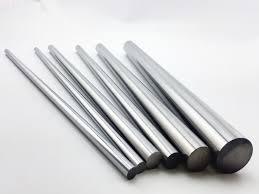Tungsten carbide solid rods are widely recognized for their exceptional strength, durability, and versatility. These rods are composed of tungsten carbide, a compound made from tungsten and carbon atoms. In this comprehensive guide, we will delve into the properties of tungsten carbide solid rods and explore their various applications across different industries.
I. Understanding the Properties of Tungsten Carbide Solid Rods
Composition and Structure:
https://www.diatooling.com/solidcarbide-rod.htmlare primarily composed of tungsten carbide particles held together by a metallic binder, typically cobalt or nickel. The unique combination of these materials results in a high-performance product with remarkable properties.
Hardness and Wear Resistance:
Tungsten carbide solid rods are renowned for their exceptional hardness, ranking just below diamonds on the Mohs scale. This hardness makes them highly resistant to wear, abrasion, and deformation, making them ideal for applications that involve high-stress environments.
Strength and Toughness:
Despite their extreme hardness, tungsten carbide solid rods also exhibit impressive toughness. This property allows them to withstand heavy impacts and shocks without fracturing, ensuring their longevity and reliability in demanding applications.
Heat Resistance:
Tungsten carbide solid rods have excellent heat resistance, enabling them to maintain their structural integrity even at high temperatures. This property makes them suitable for use in high-temperature environments, such as metalworking and aerospace applications.

II. Applications of Tungsten Carbide Solid Rods
Tooling and Cutting Applications:
Tungsten carbide solid rods are extensively used in tooling and cutting applications due to their exceptional hardness and wear resistance. They are commonly employed in the production of cutting tools, such as drills, end mills, and inserts, enabling efficient and precise machining operations.
Wear-resistant Components:
The remarkable wear resistance of tungsten carbide solid rods makes them ideal for manufacturing wear-resistant components. These rods are widely used in industries such as mining, oil and gas, and construction to produce wear parts like nozzles, valve seats, and pump plungers, which can withstand harsh operating conditions.
Metal Forming and Stamping:
Tungsten carbide solid rods find applications in metal forming and stamping processes. They are utilized to create dies and punches that can withstand the high pressures and repetitive impacts involved in these operations, ensuring consistent and accurate shaping of metal components.
Aerospace and Defense:
The aerospace and defense industries rely on tungsten carbide solid rods for various applications. These rods are used in the production of aircraft components, such as turbine blades and engine parts, where their strength, heat resistance, and wear resistance are crucial.
Medical and Dental Tools:
Tungsten carbide solid rods are also utilized in the medical and dental fields. They are employed to manufacture surgical instruments, dental drills, and orthopedic implants, where their hardness and corrosion resistance are essential for precise and reliable procedures.

Conclusion
Tungsten carbide solid rods are invaluable in numerous industries due to their exceptional properties and wide range of applications. Their hardness, wear resistance, strength, and heat resistance make them indispensable for tooling, wear-resistant components, metal forming, aerospace, and medical applications. By understanding the properties and applications of tungsten carbide solid rods, industries can harness their full potential and benefit from their remarkable performance and longevity.
Tungsten Carbide Solid Rods: A Solution for Components in Automotive Manufacturing
